Gone are the days when aggressive sales tactics and broad-brush advertising were the cornerstones of business growth. In 2024, the spotlight is on product-led sales, a strategy that turns the traditional sales playbook on its head.
This approach, focused on letting the product itself drive customer acquisition and retention, is rapidly outpacing the older model for many on the software world and we’re starting to see these tactics more and more in the D2C and lead generation space.
This blog post explores how the marriage of product-led sales and thoughtful advertising is setting a new standard for generating robust sales pipelines and driving business growth, even if you’re not SaaS company, and why it matters to you when you’re running ads.
The Power of Product-Led Sales
Product-led sales revolve around the concept of using your product as the main catalyst for customer acquisition, engagement, and retention.
It works best when the product is simple enough that a user can not only easily understand what it is and how it works, but also be able to make a purchase decision independent of a sales person. The fact is that today’s B2B customers don’t want to talk to you.
The products that see the greatest success with this approach are the ones that require sharing in order to get the full value of the product.
For instance, Slack, the widely-used communication platform, is a prime example of product-led growth.
They focused on creating a user-friendly, indispensable tool for workplace communication that spread organically within organisations. As individual teams adopted Slack, its value became apparent, leading to wider adoption across entire companies and a valuation of over a billion dollars for the start-up.
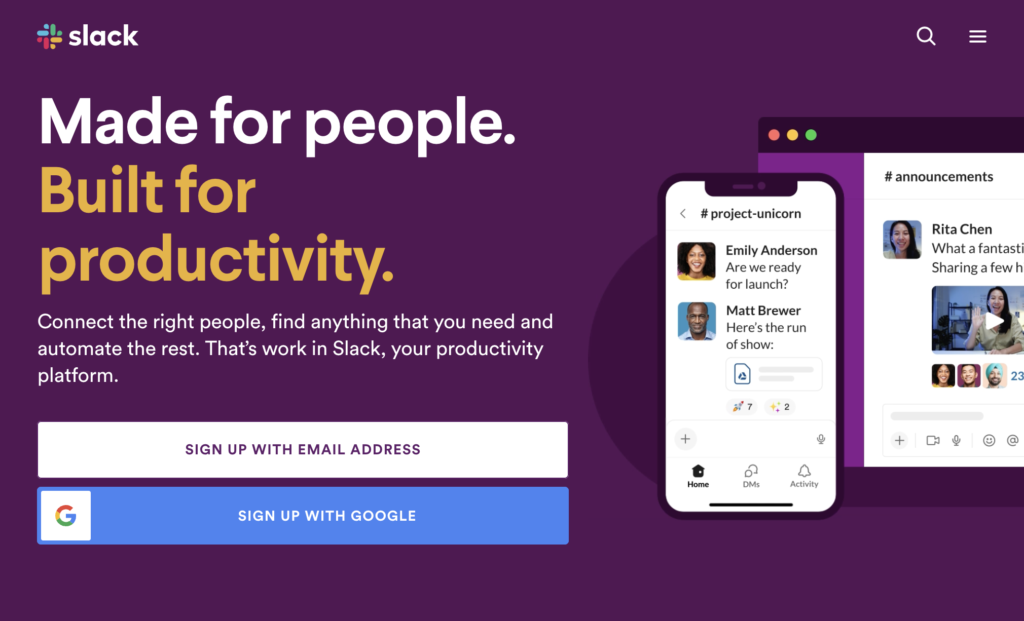
Another example is Dropbox, which used a freemium model to attract users.
Their product-centric approach, combined with a referral program, led to rapid growth. Users who experienced the ease and utility of Dropbox became its biggest promoters.
Zoom’s rise to prominence, especially in the remote work era, is yet another testament to the power of product-led growth. By offering a reliable, high-quality video conferencing service that was easy to use and deploy, Zoom quickly became the go-to solution for businesses and individuals alike, outperforming older, more cumbersome tools.
Tools like Slack, Dropbox and Zoom are perfect examples of product-led sales because they are designed for collaboration automatically creating additional users when new product interact with the product.
They can also create new data points that can be used for further sales and marketing activities.
If you can create a marketing channel in which prospects can discover and use or experience your product without needing support from a human being, and can then sign up without needing a sales-person, you have the seed for product-led sales.
what can we learn from Product led sales and advertising?
So how can you adopt this approach in your business, especially when it’s hard to give away your product for free or provide a trial upfront?
This is where strategic advertising plays a crucial role.
The key to successfully integrating advertising with product-led sales lies in understanding your audience and how your product can solve their problem. Ads should highlight the unique benefits of your product, addressing specific pain points and offering a clear call to action.
For instance, a targeted Facebook ad campaign can direct potential users, based on their interests, to a landing page where users can immediately experience your product’s features or find out more about how others have used the product if they are not immediately ready.
A Meta ads campaign from Dropbox below contains case studies about how different businesses use the product, and then drives the user to a deep-dive article to read more.
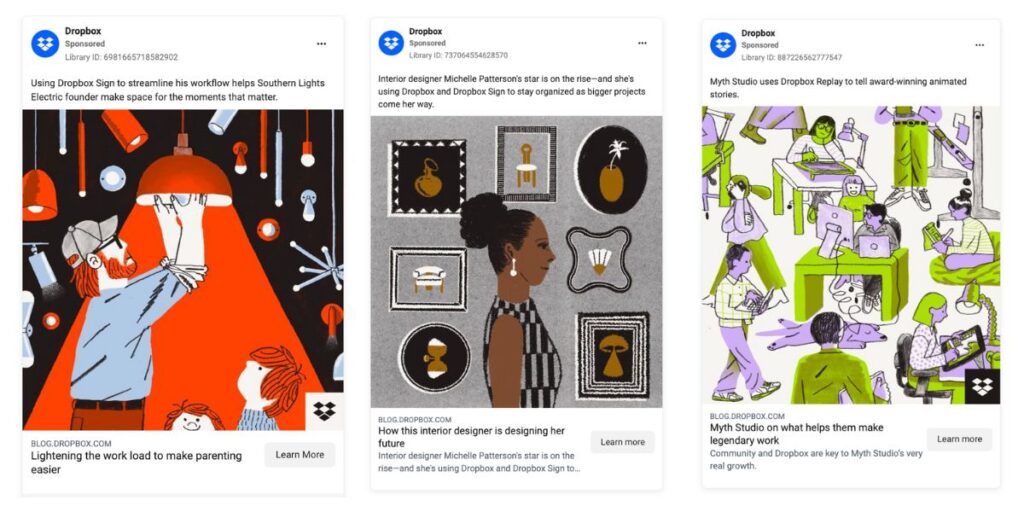
This approach clearly show that Dropbox knows how their audience makes buying decisions.
It’s likely that at this stage in Dropbox’s existence, potential users they target with ads have already adopted cloud storage, so any decision to use Dropbox instead is about analysing it against an existing solution. Using case studies helps with this consideration, and a link to the product throughout the article is then available if users want to find out more and then sign up to the trial.
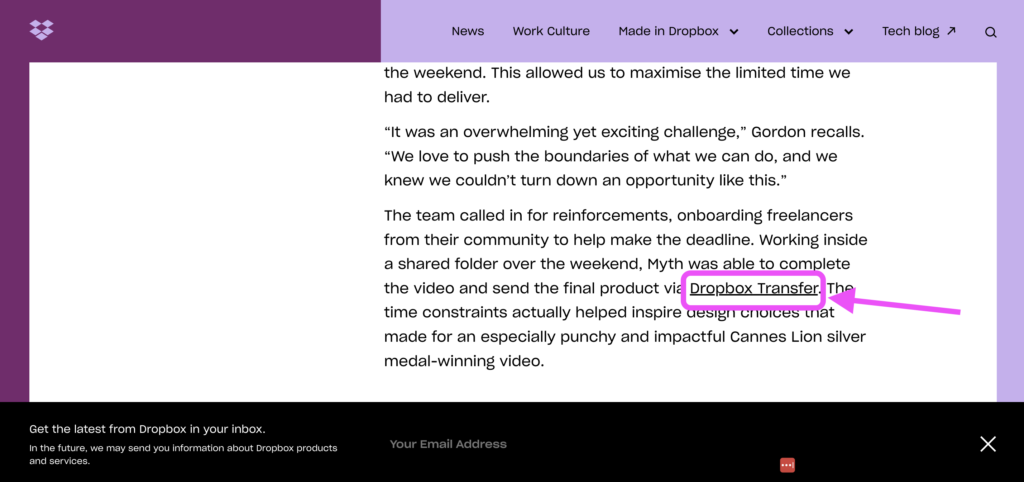
Social listening tool Brandwatch has a longer sales funnel due to it’s increased purchase consideration (price and time to onboard) and so, although they use the same approach for their social ads funnel: ads that contains case studies and testimonials taking users to a landing page, they instead drive users to a lead collection form.
They will then follow up and nurture that lead through email and phone, then provide a demo or a fixed trial.
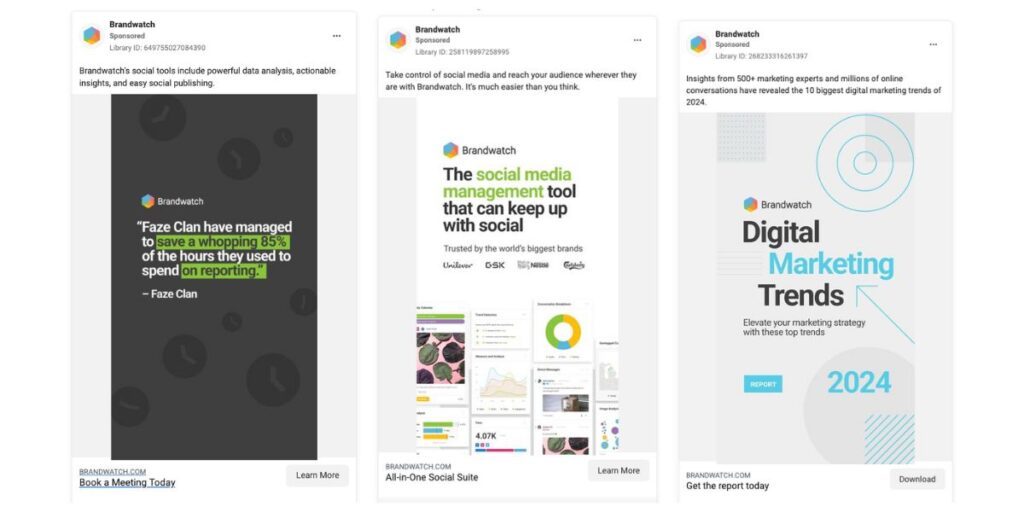
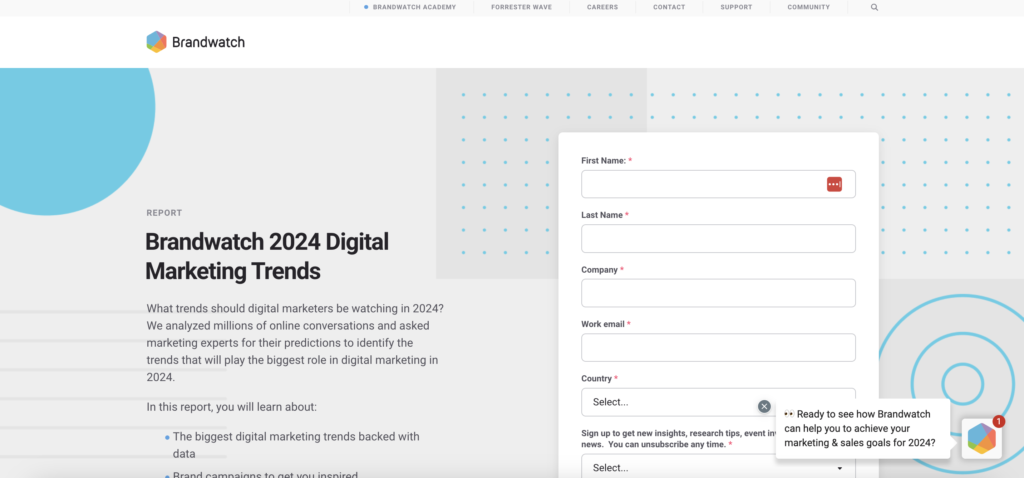
The price point has clearly set the objectives for each funnel, but they are mostly the same at the top – show how the product makes other’s lives easier.
Then the demo will solidify that approach and the rest is in the product-led growth playbook. All roads lead to getting that trial. The the experience of the trial, the touch points provided throughout and then the follow up should close the sale.
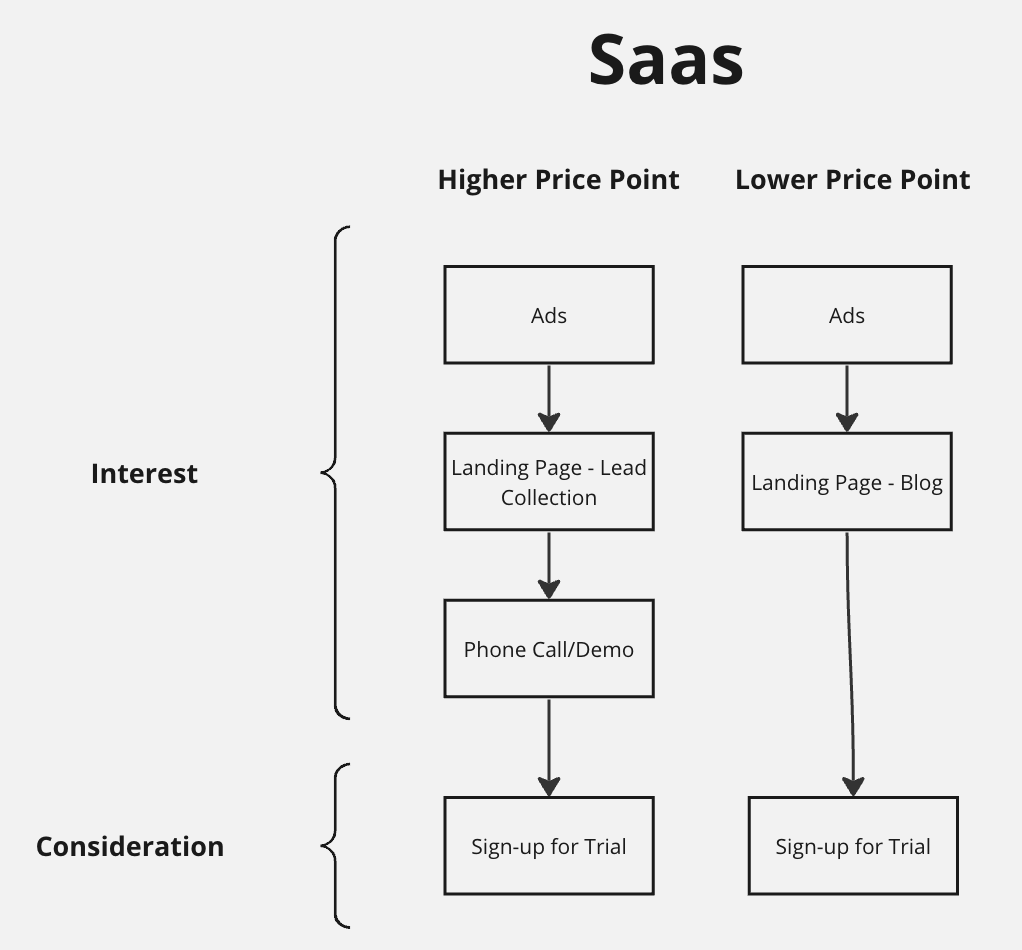
What about DTC businesses?
The direct to consumer (DTC) world can learn a lot from a product-led sales approach in their funnels and ads.
It’s hard to provide a trackable demo for these types of businesses like SaaS, so the consideration has to be much further up the funnel. This is where ads can play a pivotable part in the strategy, as by using video you can showcase a product using user generated content or demo ads. An example of this can be seen below with our client K9 Trail Time.
The “demo” is all done in the ad, the website provides clear information and frequently asked questions and the sales follow-up makes it easy for the customer to do a return or swap if needed, plus they are encouraged to share and comment on their purchase on social media.
It also helps if you have a community to collect data and feedback from. K9 Trail time run a popular Facebook group community that allows for real-time feedback on new product releases and product drops – this data can then be fed back improving the sales funnel plus allow customers to connect with other sin the consideration funnel.
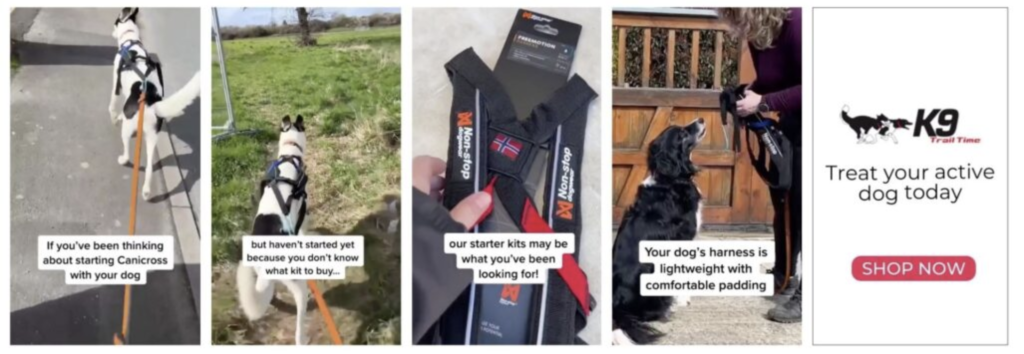
This data-driven feedback loop is not just beneficial for product improvements; it also informs future advertising strategies, ensuring that each campaign is more targeted and effective than the last.
Service-Based Businesses and Product-Led Sales
Service-based businesses can also harness the principles of product-led sales, even though their offerings are not physical products. The key here is to treat the service as a product by highlighting its tangible benefits and value proposition in your advertising.
For example, a digital marketing agency might use ads to showcase their expertise through case studies, client testimonials, and data-backed results.
By providing potential clients with a clear, compelling view of what the agency can achieve, they create an experience akin to a ‘trial’ of their services. This approach not only attracts leads but also pre-qualifies them, as they have already seen evidence of the agency’s capabilities.
In industries where services are more personal, like health and wellness, advertising can focus on the transformative experiences of past clients. Video testimonials or before-and-after images can be powerful tools in these cases, providing a ‘virtual’ experience of the service.
Embracing a Product-Led Future
As we move further into 2024, the fusion of product-led sales and strategic advertising is setting new standards in the business world. From SaaS to D2C, and even in service-based industries, this approach is proving its worth by delivering more qualified leads, shorter sales cycles, and greater customer satisfaction.
The beauty of this strategy lies in its versatility and adaptability. Whether you’re offering a cutting-edge tech solution or a transformative personal service, the principles of product-led sales can be applied to enhance your advertising efforts and grow your business.
Embracing this approach requires a shift in mindset: from selling to showing, from telling to demonstrating. It’s about letting the quality and effectiveness of your product or service speak for itself and using advertising to amplify this message.
As you plan your strategies for the rest of the year, consider how you can incorporate these insights into your sales and marketing efforts. By focusing on showcasing the real value of your offerings and strategically using advertising to enhance this narrative, you can create a robust pipeline that drives sustained growth and success.
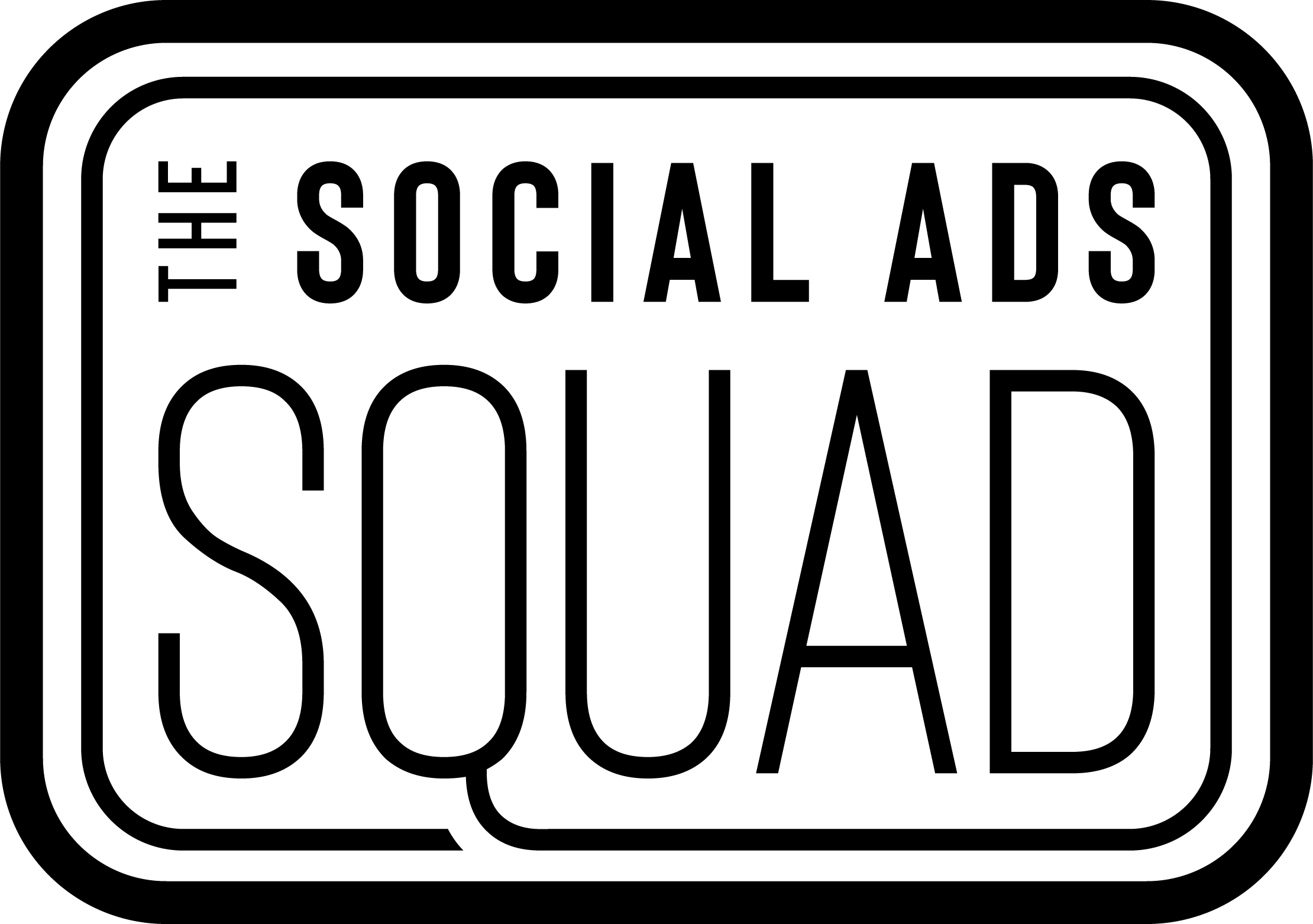
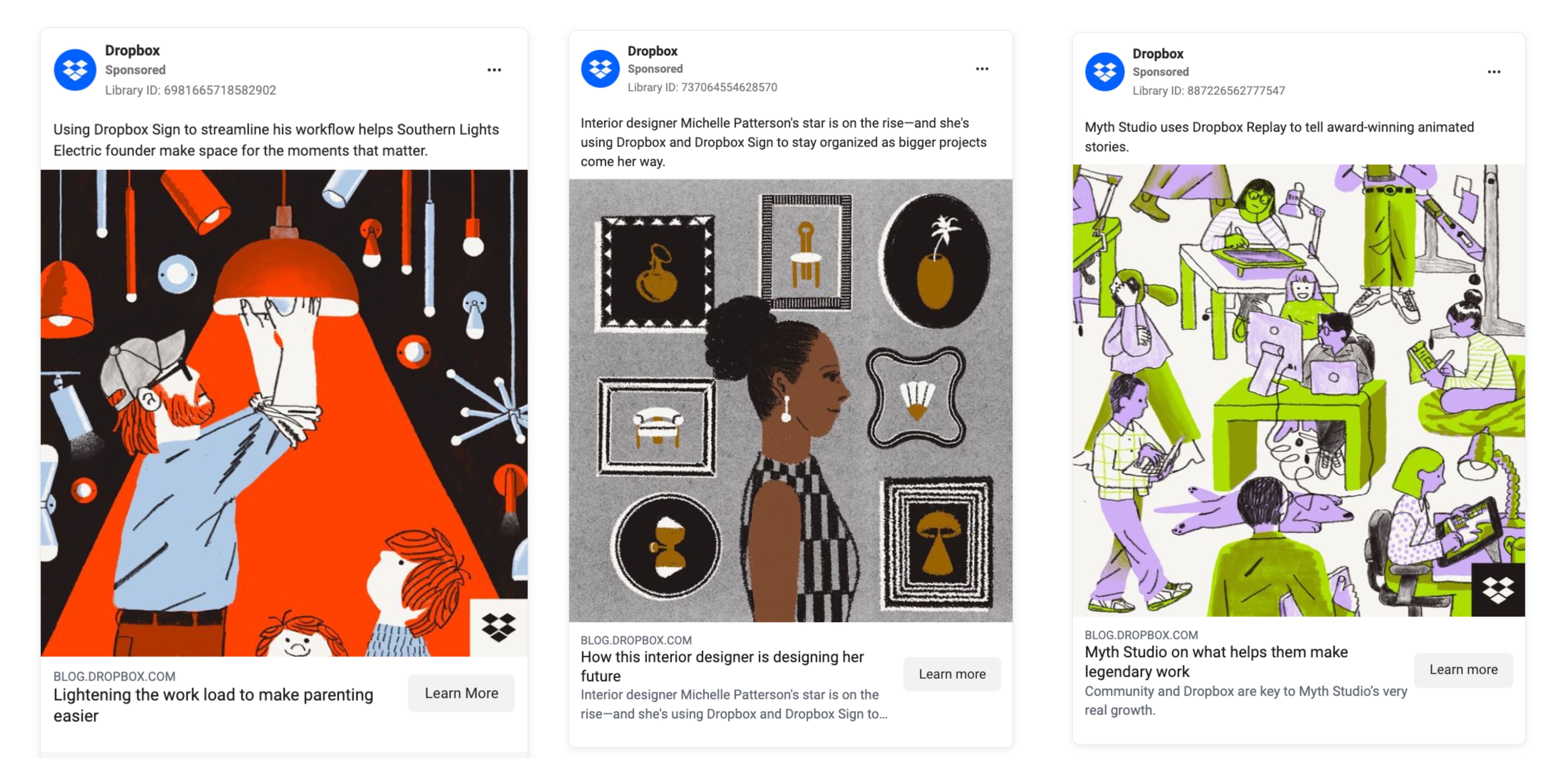
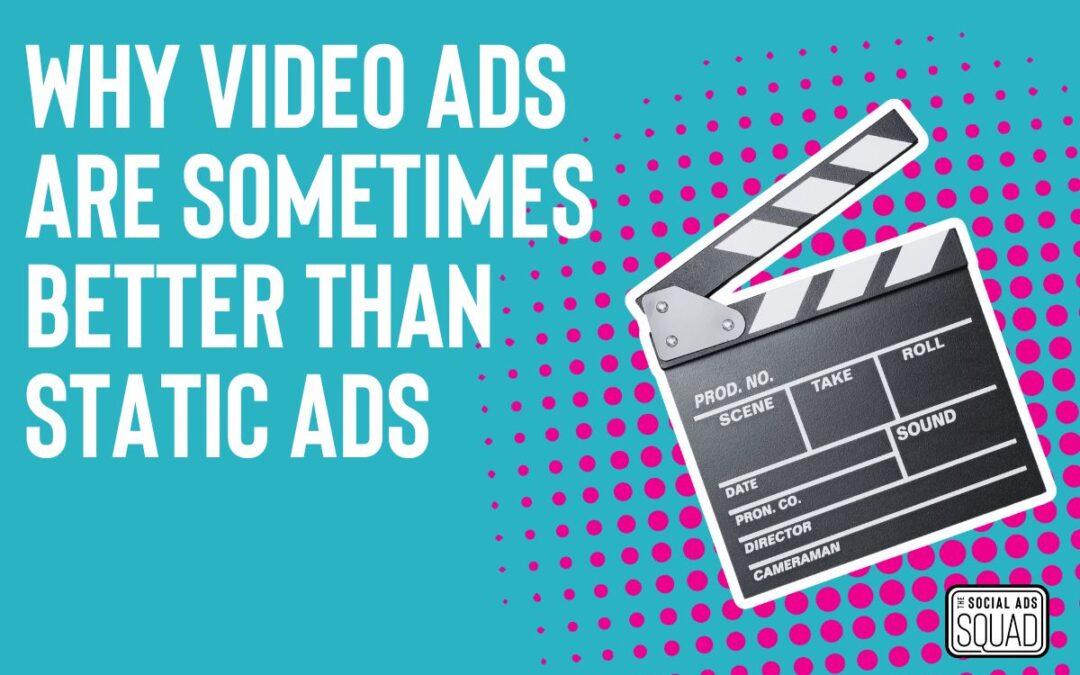
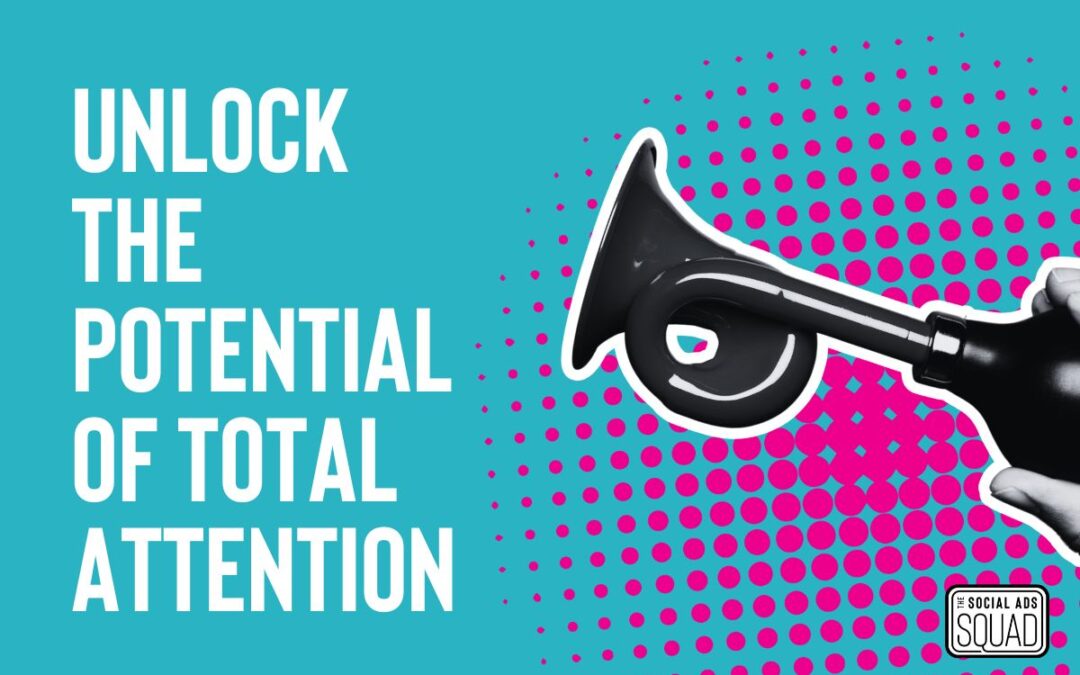
0 Comments